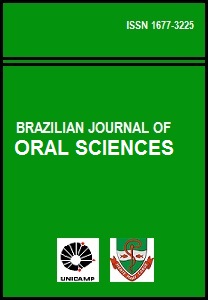Abstract
Aim: To compare bacterial leakage in root canals obturated with the modified single-cone, lateral condensation, and continuous wave of condensation techniques. Methods: Distobuccal root canals of maxillary molars were shaped up to ProTaper F2 and obturated with modified singlecone, lateral condensation or continuous wave of condensation technique. Two-chamber bacterial model using Enterococcus faecalis was employed for bacterial leakage evaluation for 30 days. The chi-square test was applied to evaluate differences between turbid and non-turbid samples, and the Kruskal-Wallis test was used for evaluating the time necessary for microleakage. A significance level of 5% was set for all analyses. Results: The modified single-cone technique showed leakage in 73.3% of samples, lateral condensation in 66.6%, and continuous wave of condensation in 53.3%, but there were no significant differences among the groups (p>0.05). Conclusions: It can be concluded that the modified single-cone technique shows similar sealing efficacy to that of lateral condensation and continuous wave of condensation technique.
This work is licensed under a Creative Commons Attribution 4.0 International License.
Copyright (c) 2015 Cleber Keiti Nabeshima, Guilherme Henrique Rosa Martins, Mário Francisco de Pasquali Leonardo, Regina Célia Furukava Shin, Silvana Cai, Manoel Eduardo de Lima Machado
Downloads
Download data is not yet available.

